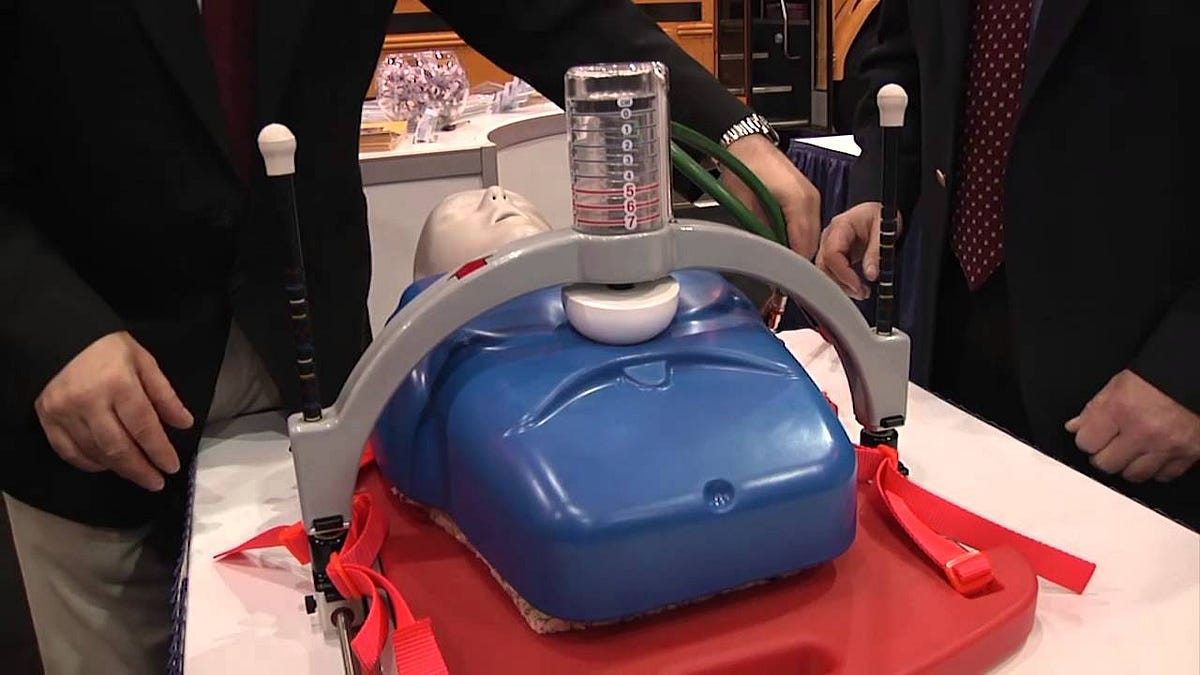Cardiopulmonary resuscitation (CPR) is a lifesaving procedure that is performed when someone’s breathing or heartbeat has stopped. It is performed by manually pushing hard and fast in the center of the chest to circulate blood to the brain and other vital organs until normal heart rhythm is restored. However, delivering high-quality and consistent CPR requires significant physical effort and endurance over a prolonged period, which can be difficult for lay rescuers and healthcare providers to maintain. This has led to the development of automated CPR devices that can provide consistent, forceful chest compressions to patients in cardiac arrest. In this article, we explore the emergence of these automated CPR devices and their potential to improve survival rates from sudden cardiac arrest.
Early Developments in Automated CPR
The need for consistent, high-quality CPR delivery resulted in the development of the first automated CPR devices in the 1990s. Initial devices focused on automating only chest compressions through spring-loaded or piston-driven mechanisms. Some early prototype devices included the Thumper, developed by Michigan Instruments in 1996, and the LUCAS device, developed by Jolife AB in Sweden in the late 1990s. While these early devices showed promise in animal studies for improving circulation during CPR, they were bulky and not practical for most clinical or out-of-hospital settings. Throughout the 2000s, researchers continued refining automated CPR technologies with the goal of developing portable, lightweight devices that could provide effective chest compressions comparable to manual CPR.
Advances in Automated Compression-Only CPR Devices
By the mid-2000s, multiple portable, battery-operated devices for automated chest compressions had been developed and evaluated in clinical trials. Some notable second-generation devices included the AutoPulse manufactured by ZOLL Medical Corporation and the LUCAS-2 device from Physio-Control/Jolife AB. Studies found that these devices were able to deliver chest compressions that met the American Heart Association’s quality of care metrics for rate, depth, recoil, and elimination of interruptions. Compared to manual CPR, they were shown to produce higher blood pressure and cardiac output in cardiac arrest patients. The primary drawback was that these initial automated devices only provided chest compressions and did not have the capability to support ventilation. Therefore, they still required additional rescuers to manually perform rescue breathing.
Integration of Ventilation Support
To fully automate the CPR process, researchers recognized the need for automated devices that could support both chest compressions and ventilation. This led to major innovations around 2010 with the development of integrated systems that pair an automated chest compression unit with an automated bag-mask ventilation device. Examples include the AutoPulse Plus device (formerly known as the AutoPulse Resuscitation System) and the LUCAS 3 chest compression system. Both systems use an automated ambu bag that provides continuous, consistent ventilations in synchrony with the chest compressions. Studies found that these “complete automated CPR” systems were able to maintain oxygen saturations and end-tidal CO2 levels comparable to high-quality manual CPR. They also reduced rescuer fatigue and errors compared to manual CPR. As a result, complete automated CPR systems began emerging as a viable alternative to manual CPR.
Use of Automated CPR Devices in the Field
With compelling data on effectiveness compared to manual CPR, Automated CPR Devices began transitioning from clinical trials to real-world implementation in the late 2010s. Several EMS agencies adopted complete automated CPR systems for deployment on ambulances to provide lifesaving support during cardiac arrest transports to hospitals. For example, King County EMS in Seattle, Washington began using LUCAS devices in 2013 and observed a doubling in neurologically intact survival rates for out-of-hospital cardiac arrests. Additional studies also found their use in EMS associated with improved survival to hospital discharge. Automated devices also showed promise when deployed earlier through public-access programs. For instance, deploying AutoPulse machines at airports and casinos enabled earlier high-quality CPR initiation while awaiting EMS arrival. Overall, real-world implementation studies demonstrated how automated CPR technologies could help overcome barriers to high-quality CPR delivery outside of hospital settings.
The Future of Automated CPR Devices
Looking ahead, further advances can be expected to refine existing automated CPR technologies and integrate them more broadly into emergency response systems. Areas of ongoing innovation include developing lighter, more compact devices that are easier for first responders to transport and use in challenging out-of-hospital settings like moving ambulances or tight spaces. Researchers are also working on integrated defibrillation capabilities that can analyze cardiac rhythms and deliver shocks if needed, avoiding interruptions and eliminating the need for additional responders. Longer term, there is also interest in developing fully automated CPR systems for use by untrained bystanders through integration with wearable technologies or public access points. With continued validation in real-world clinical practice, automated CPR devices show significant promise to standardize resuscitation quality and ultimately help save more lives from cardiac arrest.
Automated CPR devices have emerged as an innovative technology to overcome some of the challenges of manual CPR delivery and help improve outcomes from sudden cardiac arrest. Initial devices focused only on chest compressions but more recent integrated systems now automate both compressions and ventilations. Real-world clinical experience demonstrates their ability to deliver more consistent, higher quality CPR both in hospitals and out-of-hospital settings. With ongoing refinements, automated CPR promises to help disseminate lifesaving resuscitation support more widely and achieve the goal of restarting more hearts. As implementation continues, many lives stand to benefit from these developments in automated resuscitation technology.
*Note:
1. Source: Coherent Market Insights, Public sources, Desk research
2. We have leveraged AI tools to mine information and compile it

